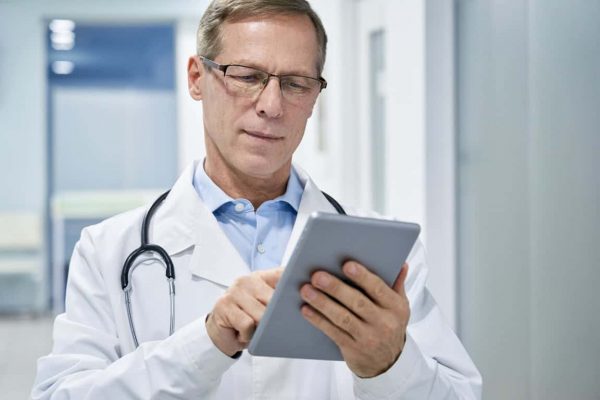
When it comes to patient care, healthcare organizations are constantly seeking ways to improve outcomes. This is where remote patient monitoring services step in as a game-changer, and has been shown to reduce hospital readmissions.
These services allow healthcare professionals to connect with patients and monitor their vital signs and symptoms in real-time, enabling them to intervene proactively and prevent adverse events.
By implementing remote patient monitoring services (RPM services), healthcare organizations can effectively manage chronic diseases and optimize care plans. With continuous monitoring of vital signs such as heart rate, blood pressure, blood glucose levels, and oxygen saturation, healthcare providers can identify trends and potential complications early on.
As healthcare organizations strive to provide patient-centered care, remote patient monitoring services play a crucial role in personalizing treatment plans and improving patient outcomes and satisfaction. Patients appreciate the convenience and peace of mind that comes with knowing their healthcare provider is monitoring their health remotely.
This level of support and continuous care can lead to higher patient engagement, adherence to treatment plans, and ultimately, better patient outcomes. Let’s take a look at all of the benefits.
Healthcare organizations are increasingly looking for innovative ways to enhance their programs and make healthcare more accessible and convenient for patients. Remote patient monitoring services offer a unique opportunity for healthcare organizations to revolutionize their programs and provide a higher standard of care.
By integrating remote patient monitoring services into their programs, healthcare organizations can overcome many of the limitations associated with traditional in-person visits. Patients no longer have to bear the burden of travel, especially in remote areas where access to healthcare may be limited. Instead, they can receive care in the comfort of their homes while still maintaining regular communication with their healthcare providers.
Furthermore, remote patient monitoring services provide healthcare professionals with a wealth of valuable data. With continuous monitoring, healthcare providers can track changes over time, detect potential health issues, and assess the effectiveness of treatment plans. This data-driven approach allows for more personalized and proactive healthcare, leading to improved patient outcomes.
By utilizing remote patient monitoring services, healthcare organizations can also streamline their processes and make more efficient use of resources. With traditional in-person visits, healthcare providers spend a significant amount of time on administrative tasks such as scheduling appointments, documenting patient information, and dealing with no-shows.
Remote patient monitoring services eliminate many of these administrative burdens, allowing healthcare professionals to focus on delivering high-quality care.
Remote patient monitoring services have a significant impact on chronic disease management. Patients with conditions such as diabetes, hypertension, and heart disease require ongoing monitoring and management of their health. An estimated 133 million Americans suffer from a chronic disease.
Remote patient monitoring services enable healthcare professionals to closely track patients’ vital signs and communicate with them regularly, making it easier to manage chronic diseases effectively. By detecting early warning signs and providing timely interventions, healthcare providers can prevent complications and ensure better disease control.
Remote patient monitoring services excel in early detection and prevention of adverse events. By continuously monitoring patients’ vital signs, healthcare professionals can identify trends or deviations from normal values. This enables early detection of potential health issues and prompt intervention, preventing complications that may require emergency room visits or hospitalizations.
For instance, a sudden increase in blood pressure or a significant drop in oxygen saturation levels can alert healthcare providers to potential health emergencies and allow for immediate action.
Implementing remote patient monitoring services can lead to substantial cost savings for healthcare organizations. By preventing complications, reducing hospital readmissions, and avoiding emergency room visits, healthcare providers decrease the overall healthcare expenses associated with managing chronic diseases.
Moreover, remote patient monitoring services enable earlier interventions and treatments, which are generally more cost-effective than managing advanced or severe health conditions. With resource optimization and improved patient outcomes, healthcare organizations can allocate their budgets effectively and focus on preventive care strategies.
Remote patient monitoring services empower patients to take an active role in their healthcare journey. By providing patients with user-friendly devices and educating them on how to monitor their vital signs, remote patient monitoring promotes self-management and patient engagement.
Patients feel a greater sense of control as they play an active role in monitoring their health and keeping their healthcare providers informed. This partnership between patients and healthcare providers leads to improved patient satisfaction and adherence to treatment plans, ultimately resulting in better health outcomes.
Remote patient monitoring services have the potential to bridge the gap in access to specialized healthcare services. Patients living in rural or remote areas often face challenges in accessing specialized care due to limited resources and long travel distances. With remote patient monitoring, these patients can receive specialized care remotely, eliminating the need for extensive travel and enabling healthcare providers to reach underserved populations.
This not only improves patient outcomes but also reduces healthcare disparities and ensures that patients from all regions have access to high-quality care.
In summary, RPM services offer a range of benefits for healthcare organizations, from improving chronic disease management to promoting patient empowerment and enhancing access to specialized care.
By leveraging this innovative technology, healthcare organizations can optimize resources, streamline healthcare delivery, and provide personalized care to their patients. Remote patient monitoring services are a game-changer in the healthcare landscape, bringing significant advancements in patient outcomes and revolutionizing the way healthcare is delivered.
If you want to take the next step in healthcare technology, contact us today to find out more about what we can do for your healthcare organization.